|

Sainte-Baume Grotto: Mary Magdalene & The Zero Point
Part I
Photos and Essay © 2007 Dahna Barnett
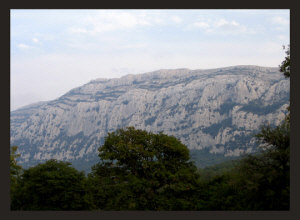
Languedoc legends indicate that Mary Magdalene lived as a hermit in the Sainte-Baume Mountains of southern France. This towering mountain range is located in the heart of Aix-en-Provence and rises equidistant between the Alps and the sea.
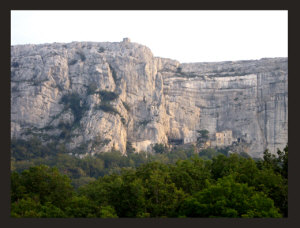
Sainte-Baume's monastery, chiseled high on the mountainside, is reminiscent of Arizona's Hopi mesas. The inkling of a road skirts the mountain's base. This path leads to the Saint-Baume Grotto located beside the cliffside monastery. The name "Sainte-Baume" derives from the Provençal word for grotto, baoumo.
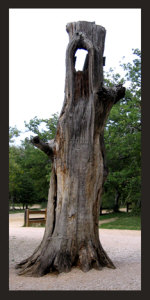
At the edge of the woods, the remnant of an old oak tree seems to shapeshift into the form of a woman
welcoming pilgrims into her domain...
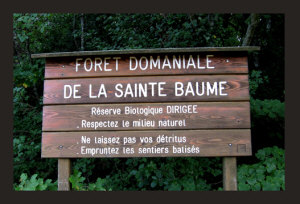
...the domain of the forest of Sainte-Baume.
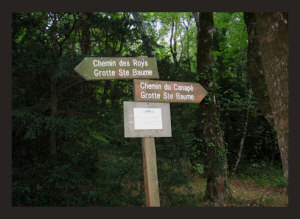
Crossing the threshold, a decision is forced: the left-hand path or the right-hand path. Both terminate at the grotto.
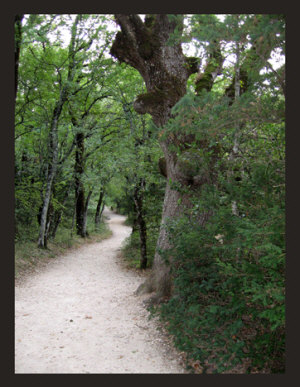
The left-hand path is called the Chemin des Roys, the "Path of the Kings." Walking at a reasonable pace from the base of the mountain to its summit requires about an hour. To pay homage or do penance, kings and popes took this path. If their sacrilege was truly horrific, they made the journey on their knees.
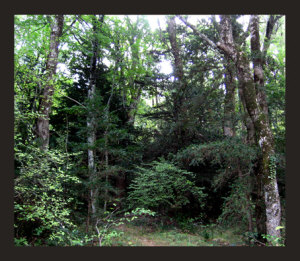
The trail winds through dense forest. Its cool, wet microclimate provides the optimum environment for deciduous trees such as beech, maple, lime, ash and elm.
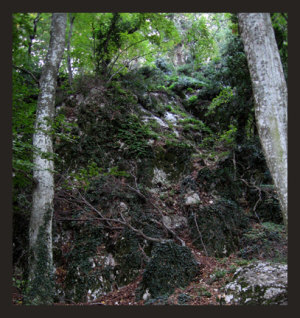
This Broceliande mingles species indigenous to
northern and southern France.
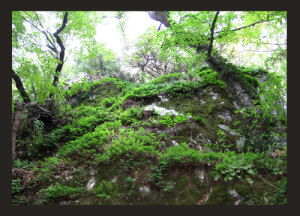
The variety of flora is rare in France and unique to Sainte-Baume. The woodlands weave an air of enchantment. The sacredness of the forest has protected it for over two thousand years. Regents have consistently forbidden tree felling.
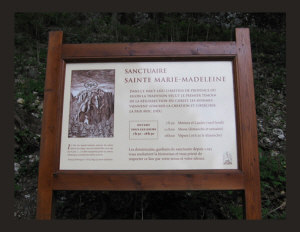
The site is dedicated to Marie-Madeleine, although pilgrimages to the grotto predate Christianity.
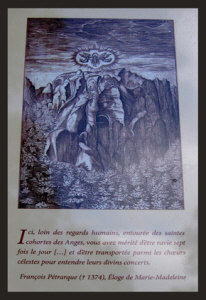
Using current parlance, Mary Magdalene was a Palestinian refugee who sought asylum in southern France. After many years of trials, she ascended from Sainte-Baume's summit.
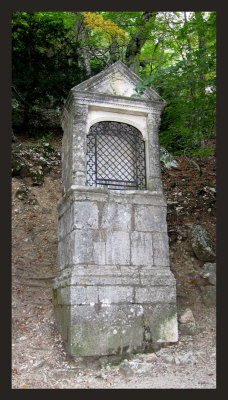
Shrines stationed along the path seem designed to activate the imagination and foreshadow the grotto's mysterium. Since the majority of people during the Middle Ages were illiterate, the shrines display Biblical scenes in bas-relief.
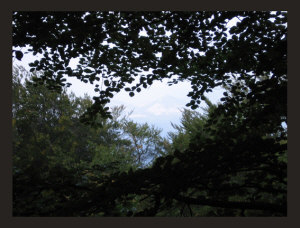
As the incline grows steep, the sight of a sky-blue, pyramidal mountain rewards the diligent. The view seems otherworldly.
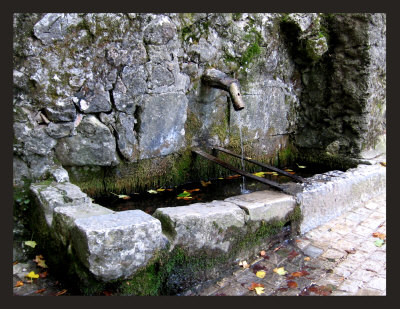
Further up the northern slope, a spring spills into a stone cistern. Susan Haskins, a Magdalene researcher, translates "Sainte-Baume" as "Holy Balm." This may be the reason Mary Magdalene is associated with the grotto.
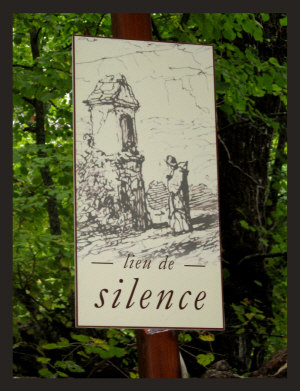
From the cistern onward, pilgrims are advised to proceed in silence.
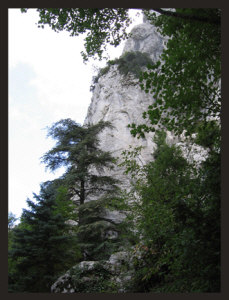
As the climb becomes arduous, the rock's sheer face pops into view.
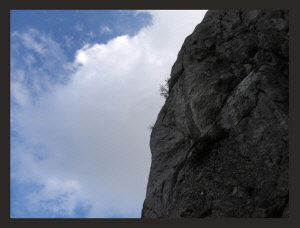
The limestone cliffs are barren and inhospitable.
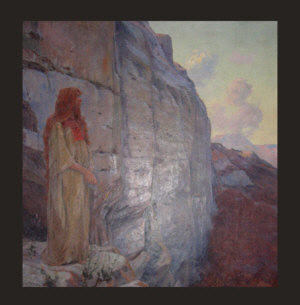
Yet Mary Magdalene allegedly lived here for thirty years.
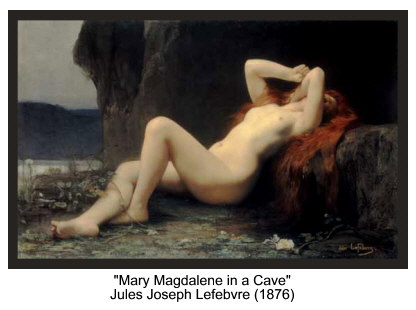
Mostly naked.
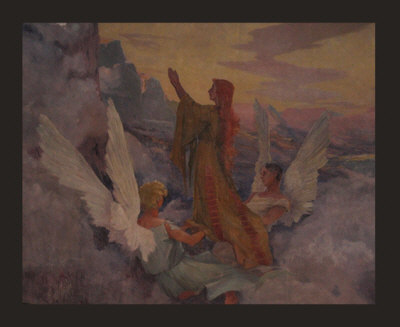
As the story goes, her only sustenance was the Holy Eucharist, which she received on a daily basis from angels. During her waning years, the angels descended from heaven and transported her to
an undisclosed location. There she feasted on celestial harmonies
and witnessed the Rapture.
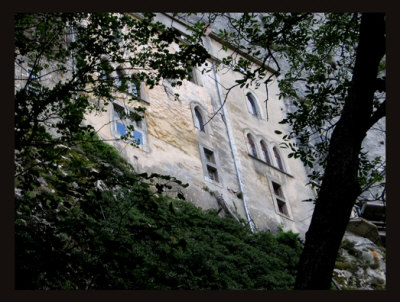
Another legend tells the story of a man who was reputedly epileptic. He discovered a statue inside a fissure of a woman holding a child, which led to an ecstatic seizure. Apparently this episode served as the catalyst for the archbishop ordering the construction of a chapel inside the grotto. His Holiness named the statue Our Lady of Solace, Notre Dame de Consolation. The statue's discoverer vowed to inhabit the grotto for the remainder of his life. A suitable hermitage was erected. Over time it was enlarged into a monastery.
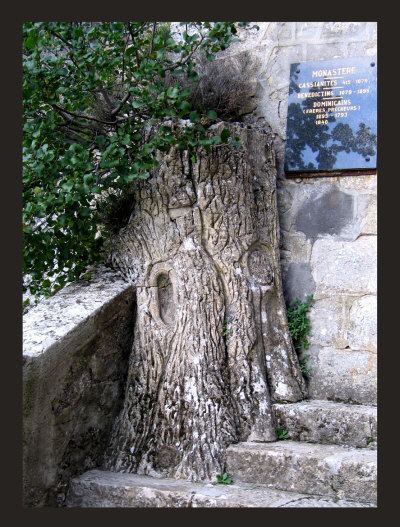
A marble plaque details the history of the grotto's caretakers: Cassianites, Benedictines and Dominicans.
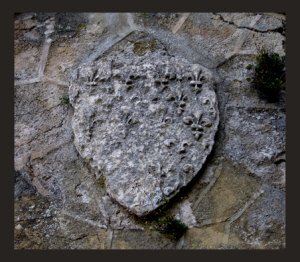
Another kind of plaque, with another kind of history, hangs nearby. The fleur-de-lys has symbolized France and its monarchs for hundreds of years. Contemporary research suggests that this symbol may represent the Judaic royal bloodline descending from Mary Magdalene.
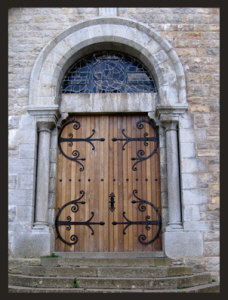
An oak door flanked by twin pillars now bars the once-gaping orifice to the grotto. The pillars may represent Jachin and Boaz, the pillars at the entrance to Solomon's temple. They may also represent the dual leadership roles of spiritual and temporal kingship.
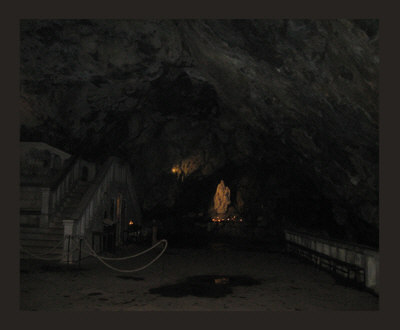
Crossing the threshold, the pilgrim enters an enormous cave. The grotto is so huge that a full-scale chapel in honor of Mary Magdalene, the patron saint of Provence, stands inside it. The stairs to the chapel are on the left.
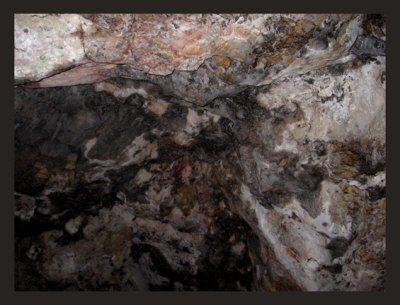
The grotto is cold and dark. Its primary illumination is from stained-glass windows and the lighting for the statues. The cave's walls are hard, rough and seemingly impenetrable. Yet water trickles through tiny crevices onto man-made, multi-level floors.
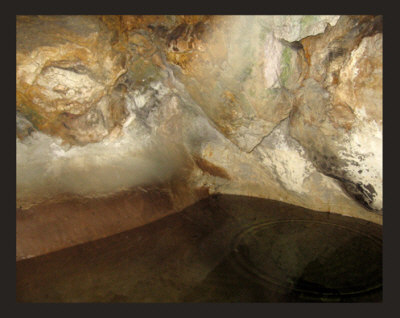
Water also drips into a stony cistern.
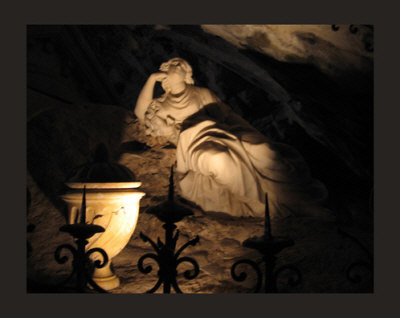
Ascending a small spiral staircase near the chapel's altar, Mary Magdalene reclines in a meditative posture beside a womb-like "alabaster jar."
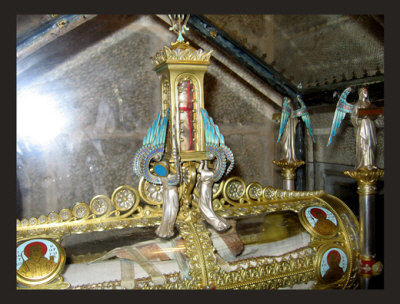
A reliquary housing Mary Magdalene's bones rests in a niche on a lower level beneath her statue. Since thousands of pilgrims over the centuries sought miracles from them, popes and bishops vied for her relics.
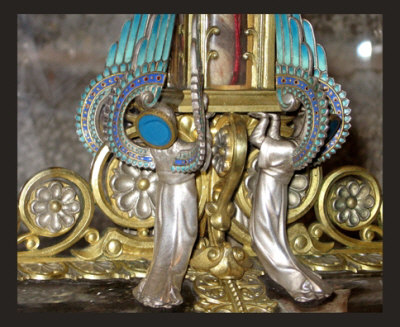
Four angels bear the reliquary. They seem strikingly similar to descriptions of the seraphim on the Ark of the Covenant.
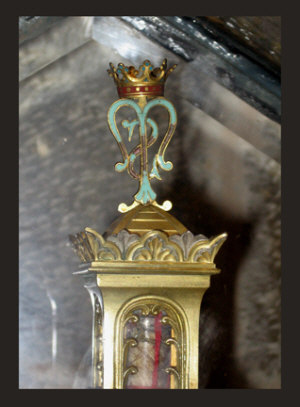
The insignia of Mary Magdalene tops the vessel.
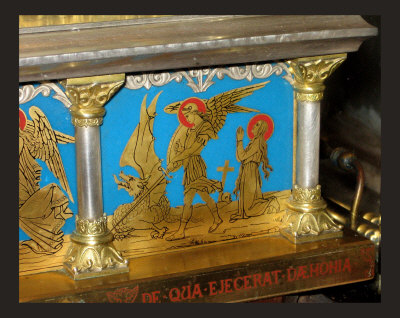
Saint George guards her bones. In various mythologies bones are said to contain an essence necessary for the creation of life.
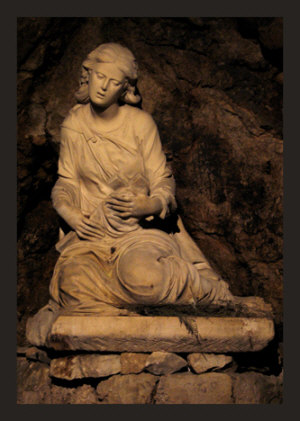
On the bottom tier of the grotto, a sad-looking statue symbolizes Mary's grief and solitude. Pilgrims readily identified with these emotions. During the visits, a stocky man entered the grotto, walked to the far side of the statue, stared at its base for a long time, then wept while crossing himself.
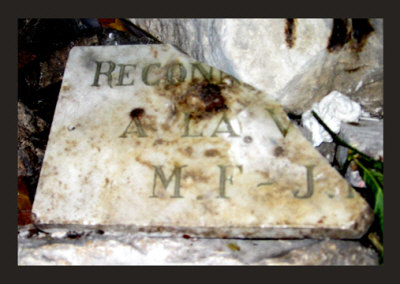
This was the only artifact at the statue's base.
Its significance is unknown.
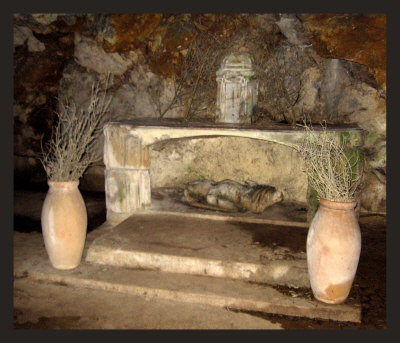
Near the statue of Mary is an odd scene. A jar stands on a stone archway. It may represent the Magdalene's alabaster jar or a funerary urn. Two more jars containing dead branches flank the steps — perhaps they represent the "withered vine"
of the Judaic "branch of Jesse."
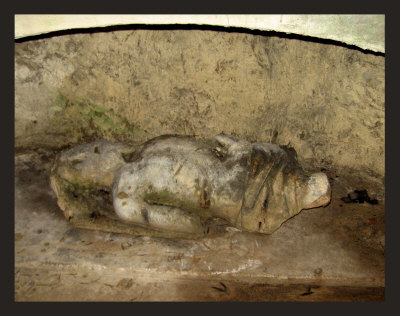
Inside the tomb is a replica of a male torso. The expression on the torso's face — its staring yet gaze-less eyes, wide mouth and slack jaw — indicates agony. The statue may represent the torture of Christ, a Templar knight, a Cathar, or the Green Man.
Part II
Return to the Mythic Passages Menu
Subscribe to the Mythic Passages e-zine
|

